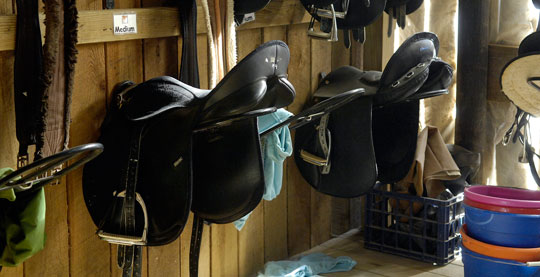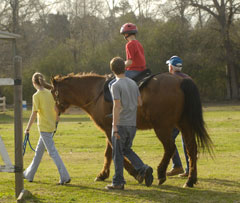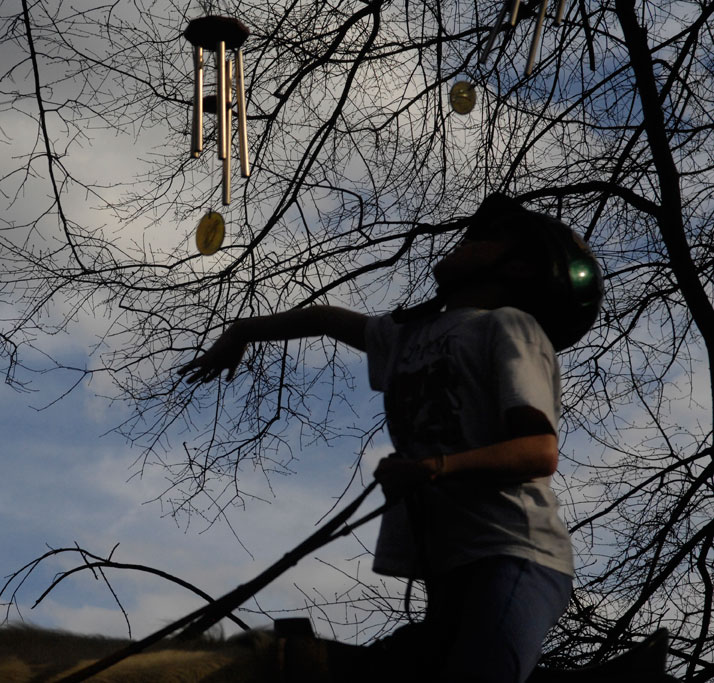UAB Saddles Up With Special Equestrians
By Caperton Gillett

“Making disabilities disappear.” That’s the motto of the Special Equestrians therapeutic riding program at Indian Springs School. And when the children mount up, it becomes clear that there are no disabilities here, only horseback riders—guiding their steeds through serpentines, picking up rings, throwing beanbags, and performing exercises that belie their physical, cognitive, and emotional challenges.
“Horses are amazing,” says Kathleen Claybrook, executive director of Special Equestrians. “Their hip action is almost identical to a person’s, so just by virtue of sitting on a horse, a rider with a physical disability can gain strength and mobility. They can increase their balance and core strength, relax the muscles, stimulate the nerves—you name it, they can do it, just sitting on the horse. And for somebody with a cognitive disability, sometimes it’s the movement that motivates them to do something that they wouldn’t want to do otherwise.”
Equality on Horseback
 |
The movement of a horse helps riders develop muscles to aid in their own movement. |
That movement has meant a lot for children in the UAB/Engel Therapeutic Preschool Program. Developed for young children with emotional challenges, the program joined with Special Equestrians in 2007 to offer the benefits of therapeutic riding to its students. Nancy Labriola, a speech-language pathologist and teacher with the preschool, says Special Equestrians lets her offer students opportunities they might otherwise never get to experience.
“Not only does it help them physically, but it helps them emotionally, socially, and with their communication skills,” she says. “They have the freedom to get on that horse and be in control—they’re just like everyone else on a horse.”
Children “love the way a horse moves, and they’re able to communicate much more effectively,” Claybrook adds. “A horse doesn’t require them to use difficult language skills. All they have to do is kick or pull the reins, and the horse goes where they want him to go and seems to understand much more.”
A Question of Trust
During their 12 weeks with Special Equestrians, UAB/Engel preschool students participate in riding-ring exercises to stimulate their bodies. They also guide their horses along a specially designed “sensory trail” equipped with items such as wind chimes and swim noodles to stimulate their senses.
Even the most subtle of results can be significant for a child with disabilities. Labriola says that many of her students have emotional problems and anxiety disorders that make them fearful of change. “Special Equestrians has helped them feel more secure,” she says. “The children have been able to trust someone besides their parents and their teacher.”
Parents also benefit directly from the program. Some spend their child’s lesson period running errands or taking much-needed personal time. Others sit on the porch in the “people paddock,” watching the lesson and talking with other parents who share their experiences.
 |
A specially designed "sensory trail" has features such as wind chimes and swim noodles that stimulate the rider's senses. |
Freedom to Participate
“This is something that they do that many of the other kids don’t do,” Claybrook says. “It’s huge, and when you see a little two-year-old riding this big horse effectively, it’s amazing. They’re able to participate in an activity that challenges them and uses their abilities rather than focusing on their disabilities.”
Labriola says that many of her students haven’t had the freedom to participate in many of the activities most other children enjoy—but everyone in her class gets to ride a horse. And in doing that, they gain confidence and acceptance from someone guaranteed not to judge them for their differences. “I had some little boys that had feeding tubes, and they pulled their shirts up and said, ‘I know you like to eat hay and water, but I get fed this way, with my feeding tube. And my mommy feeds me every day,’” Labriola says. “For the first time, I heard them say, ‘It’s okay to be different.’”